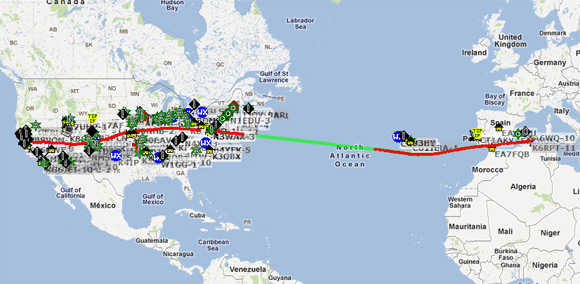Some time back, we were involved in a weather balloon experiment and I must say, it was a lot of fun. Our balloon went up to nearly 100,000 ft (considered "near space") and covered almost 100 miles in its flight. The flight ended, as most of these do, with the planned popping of the balloon. You see, our weather balloon that started at about 6 feet in diameter ended up about three times that size in the thin atmosphere at those high altitudes. As the balloon ascends, eventually it's too much for it to take and it pops. This allows us to recover our payload which we track with ham radios using a system called APRS.
At the time I remember thinking that if we could control the altitude properly, we could keep the balloon from rising all the way to its bursting altitude and thus keep it drifting with the winds to cover a really long distance. Well, the folks at the California Near Space Project have done just that in a rather spectacular way. They launched from San Jose, CA (not far from where we launched our own balloon) and three days later it landed in the Mediterranean Sea near Spain after crossing the entire US and then the Atlantic Ocean.
I suppose the next goal should be to go all the way around the world. Anyone want to try?
Via SlashDot



No comments:
Post a Comment